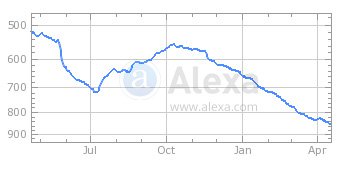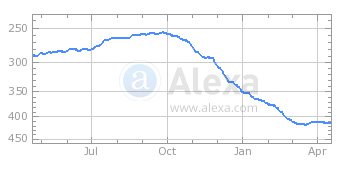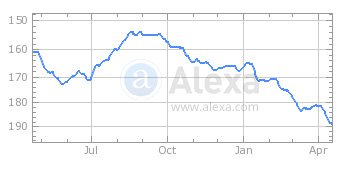How the websites that block ad blockers are suffering
We have recently found an interesting article about websites that fight programs and extensions against ads. It is about websites which open windows like “You have an ad blocker, turn it off or go away” (well, something like that). Ad blockers continue gaining popularity, and publishers believe this notification is a reasonable solution. It is expected, that if the website’s content is truly valuable to the user, he/she will add the domain to the whitelist.
Author of the article conducted a research using Alexa’s data (a company engaged in the ratings of sites), and it shows that it’s not that simple. Let’s have a look at some examples.
Wired

Wired installed anti-adblock in the first half of February. Although, we don’t see a drastic downfall on the chart. A decrease is a usual thing for Christmas and New Year holidays, then in mid-January the traffic is expected to grow, but for some reason in this case it did not happen. The installation of script against blockers did not create some kind of dramatic effect. The recession, which began in autumn, just continued.
“Wired’s global rank fell by 174 points to 853rd (hardly shabby) in the period covered, with its bounce rate rising (that’s bad) 3% to 69.60%, daily pageviews down 4.85% to 1.57 and daily time on site down 1% to 2.53 (effectively no change).”
Alex Springer / Bild

In Bild’s case, the negative effect was caused by blocking of ad blockers or because the traffic generally decreased for other reasons. But anyway this downfall (and very significant) started after taking measures against ad blockers. “Bild maintains its position as the 14th most popular site in Germany, though its global rank fell by 48 to 413 in the year covered. Bild’s bounce rate rose 2% to 38.9%, with daily pageviews little-changed at 3.54, but daily time spent on site per visitor down 6% to 7:07 – the latter figure being an impressive sustain, despite the fall.”
As we can see, right after implementation of anti-adblock scripts in October, Bild, which previously had healthy and stable increase in traffic, started losing it immediately.
Forbes

Forbes introduced ad blockers blocking in December, but as we see downfall began in early autumn (although it is usually turbulent and fruitful time for news). As in the case of Bild, the drastical decrease started right after the website implemented measures against ad blockers, and now Forbes’ traffic baseline is dramatically lowered.
“Forbes’ bounce rate is up 27% to 27.9 (though this is still an extremely good score), with daily pageviews down nearly 9% to 3.16 and daily time on site per visitor reduced 9% to just under three minutes.”
On the one hand, this trend of blocking ad blockers is gaining momentum, and on the other hand, some websites which implemented such scripts for testing have already refused of them (such as The Washington Post or GQ). Looking at the results of the study it can be said that by not letting users with ad blockers, sites eventually lose traffic significantly.
As the author believes, “if one was willing to read the trends with a more paranoid eye, it might seem that instituting these deterrents is financially suicidal, since the remnant audience, though fully monetised and ad-enabled, is so much smaller than the one prior to it”.




















































